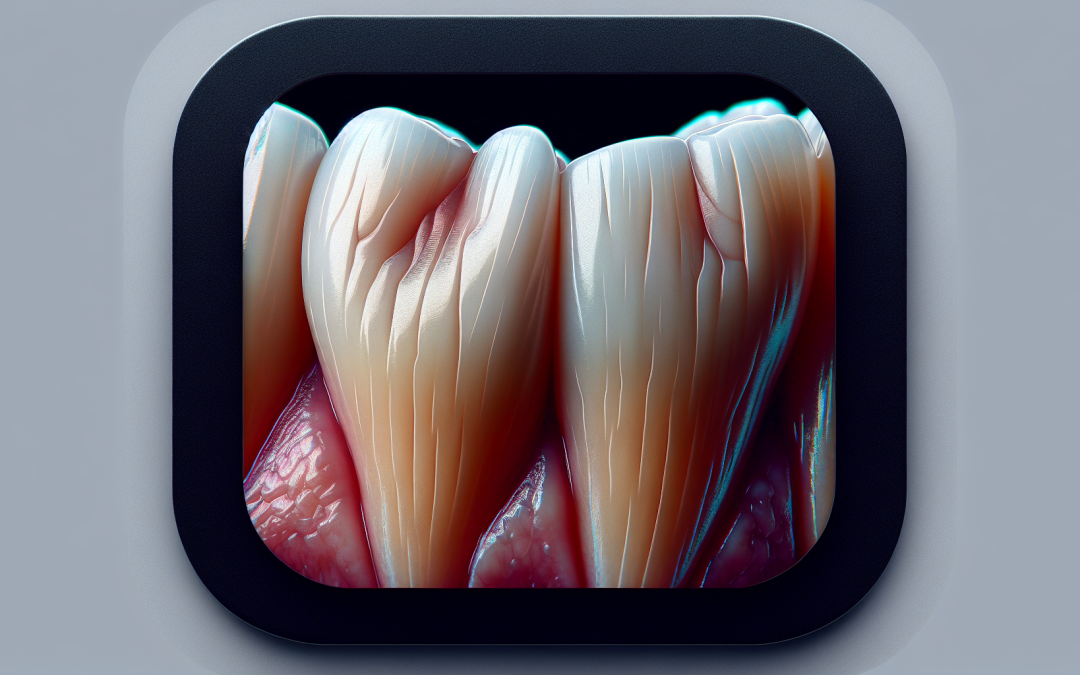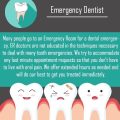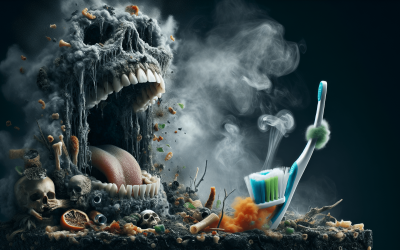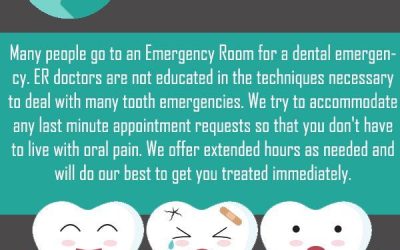So you’ve noticed some irregularities with your teeth, huh? Maybe they’re not as straight as you’d like them to be, or perhaps you’re experiencing problems with your bite. Whatever the case may be, it’s clear that orthodontic issues have entered the picture. You’re not alone, my friend – millions of people around the world face similar challenges when it comes to their dental alignment. But fear not, because in this article, we’re going to explore the world of orthodontics and delve into the various solutions available to help you achieve that smile you’ve always dreamed of. Let’s get started, shall we?
Types of Orthodontic Issues
Crowding
Crowding is a common orthodontic issue where there is not enough space in the jaw for all of the teeth to properly align. This can result in teeth overlapping or becoming twisted. Crowding can be caused by genetics, improper jaw development, early loss of primary teeth, or thumb sucking.
Spacing
Spacing refers to gaps or spaces between the teeth. These spaces can occur due to missing teeth, undersized teeth, or a discrepancy in jaw size. Spacing issues can be both cosmetic and functional, as they can affect the bite and lead to food accumulation and gum problems.
Overbite
An overbite occurs when the upper front teeth overlap excessively with the lower front teeth. This can cause the lower teeth to bite into the roof of the mouth, leading to potential dental and speech problems. Overbites can be hereditary or caused by improper jaw development, thumb sucking, or pacifier use.
Underbite
Underbite is when the lower teeth protrude in front of the upper teeth when the jaw is closed. This can result in difficulty chewing, speech problems, and an imbalanced facial appearance. Underbites can be caused by genetics, jaw malformation, or the improper growth of teeth.
Crossbite
Crossbite is a misalignment of the upper and lower teeth where one or more upper teeth bite on the inside of the lower teeth. This can result in tooth wear, gum recession, and jaw misalignment. Crossbites can be caused by genetics, thumb sucking, or abnormalities in tooth or jaw development.
Open Bite
Open bite refers to a condition where there is a gap between the upper and lower teeth when the jaw is closed. It can cause difficulty biting and chewing, speech problems, and an unbalanced facial appearance. Open bites can be caused by habits like thumb sucking or tongue thrusting, genetics, or prolonged bottle or pacifier use.
Misplaced Midline
A misplaced midline refers to an asymmetrical alignment of the center of the upper and lower teeth. This can affect both the appearance and function of the smile. Misplaced midlines can be caused by genetic factors, abnormal tooth eruption, or jaw development issues.
Impacted Teeth
Impacted teeth are teeth that are unable to emerge properly through the gums. This can occur when there is not enough space in the jaw or when teeth grow in at an angle. Impacted teeth can cause discomfort, pressure, and increased risk of infection. Wisdom teeth are commonly impacted, but other teeth can also be affected.
Protruding Teeth
Protruding teeth, also known as overjet, occur when the upper front teeth extend beyond the lower front teeth. This can lead to an increased risk of dental injuries, speech difficulties, and self-esteem issues. Protruding teeth can be caused by genetics, thumb sucking, or improper growth of the jaw or teeth.
Abnormal Eruption
Abnormal eruption refers to teeth that do not emerge in the correct position or sequence. This can cause crowding, spacing, or other orthodontic issues. Abnormal eruption can be caused by genetic factors, delayed or accelerated tooth development, or dental abnormalities.
Causes of Orthodontic Issues
Genetics
Genetics play a significant role in the development of orthodontic issues. Certain dental characteristics can be inherited, including the size and shape of the jaw, the alignment of the teeth, and the way the teeth erupt. If a family member has had orthodontic problems, there is a higher likelihood of experiencing similar issues.
Thumb Sucking
Thumb sucking is a common habit in infants and young children. However, prolonged thumb sucking can lead to orthodontic issues, such as an open bite, misplaced midline, or protruding teeth. The pressure exerted by the thumb can cause the teeth to shift or grow in an incorrect position.
Mouth Breathing
Chronic mouth breathing can have detrimental effects on dental and facial development. When a person breathes primarily through the mouth, the tongue does not rest against the roof of the mouth as it should. This can result in a narrowed upper jaw, crowded teeth, and a higher risk of developing an open bite or a crossbite.
Malocclusion
Malocclusion refers to a misalignment of the teeth and the way the upper and lower jaws fit together. This can be caused by genetics, abnormalities in jaw development, or habits like thumb sucking or pacifier use. Malocclusion can range from minor to severe, affecting both the appearance and function of the bite.
Injury or Trauma
Injury or trauma to the face or mouth can cause orthodontic issues. Accidents, falls, or sports-related injuries can lead to tooth displacement, fractures, or jaw misalignment. It is important to seek prompt dental attention after experiencing any facial or dental trauma to prevent further complications.
Teeth and Jaw Development
Proper teeth and jaw development are essential for a healthy and aligned smile. Factors that can affect development include the size and shape of the jawbones, the eruption and positioning of the teeth, and the interaction between the upper and lower jaws. Any abnormalities or disruptions in this process can result in orthodontic problems.
Improper Oral Habits
Certain oral habits, such as persistent thumb sucking, tongue thrusting, or prolonged pacifier use, can interfere with normal tooth and jaw development. These habits can cause the teeth to shift or grow in an incorrect position, leading to malocclusion and other orthodontic issues.
Early Loss of Primary Teeth
Premature loss of primary (baby) teeth can disrupt the natural development and eruption of permanent teeth. When primary teeth are lost too early, neighboring teeth may shift into the empty space, not leaving enough room for the permanent teeth to come in properly. This can lead to crowding and other alignment issues.
Tongue Thrusting
Tongue thrusting is a habit where the tongue pushes forward against the teeth during speaking, swallowing, or at rest. This can apply constant pressure on the teeth, leading to misalignment or an open bite. Tongue thrusting can be caused by various factors, including improper swallowing patterns, genetics, or oral habits.
Pacifier Use
Prolonged or improper use of pacifiers can contribute to orthodontic problems. The constant sucking motion can affect the alignment of the teeth and the development of the jaw. It is recommended to wean off pacifier use by the age of 2 to minimize the risk of orthodontic issues.
Symptoms and Signs of Orthodontic Issues
Crooked or Misaligned Teeth
One of the most noticeable signs of orthodontic issues is crooked or misaligned teeth. Teeth that are not properly aligned can impact the appearance of the smile and may cause functional problems, such as difficulty biting or chewing.
Difficulty Chewing or Biting
Orthodontic issues can affect the ability to chew or bite properly. Misaligned teeth or an improper bite can make it challenging to break down food effectively, leading to digestive issues and potential nutrient deficiencies.
Speech Problems
Orthodontic issues can also impact speech. Misaligned teeth or a malocclusion can affect the tongue and oral structures, making it difficult to pronounce certain sounds or form words correctly.
Jaw Pain or Discomfort
Orthodontic issues can cause jaw pain or discomfort, especially if there is pressure or misalignment in the jaw joints. This can result in headaches, jaw clicking or popping, and difficulty in opening or closing the mouth comfortably.
Mouth Breathing
Chronic mouth breathing can be a sign of orthodontic issues. The inability to breathe through the nose properly may indicate narrow upper jaw or airway obstruction, which can contribute to dental and facial development problems.
Thumb Sucking
Persistent thumb sucking beyond infancy can indicate orthodontic issues. It can affect the alignment of the teeth and jaw development, leading to open bites or protruding teeth.
Facial Asymmetry
Orthodontic issues can contribute to facial asymmetry. Misaligned jaws, protruding or receding chin, or uneven tooth eruption can all contribute to an imbalanced facial appearance.
Early or Late Loss of Baby Teeth
The timing of primary tooth loss can be an indicator of orthodontic issues. Early or late loss of baby teeth can affect the eruption and alignment of permanent teeth, potentially leading to crowding or spacing problems.
Protruding Teeth
Teeth that protrude beyond the normal alignment can be a sign of orthodontic issues. Protruding teeth are more susceptible to trauma and injury and may affect the overall esthetics of the smile.
Difficulties in Proper Oral Hygiene
Orthodontic issues can make it challenging to maintain proper oral hygiene. Crooked or overlapping teeth can create more areas for plaque and food particles to accumulate, increasing the risk of tooth decay, gum disease, and bad breath.
Diagnosing Orthodontic Issues
Orthodontic Examination
An orthodontic examination is the first step in diagnosing orthodontic issues. The orthodontist will visually assess the teeth, jaw, and facial structures, looking for signs of misalignment, crowding, or other issues.
X-rays
X-rays help the orthodontist get a detailed view of the teeth, roots, jawbones, and overall dental structures. They can reveal information such as tooth position, jaw alignment, and the presence of any impacted or missing teeth.
Impressions or Molds
Impressions or molds of the teeth and jaws may be taken to create study models. These models provide a three-dimensional representation of the dental structures and aid in the diagnosis and treatment planning process.
Photographs
Photographs of the face and smile are often taken to assist in the orthodontic assessment. These photographs can help evaluate facial profiles, tooth alignment, and the overall esthetics of the smile.
Medical History Evaluation
A thorough evaluation of the patient’s medical history is essential in diagnosing orthodontic issues. The orthodontist will inquire about any allergies, chronic illnesses, medications, or previous dental treatments that may impact the treatment plan.
Dental and Facial Analysis
A dental and facial analysis involves examining the relationship between the teeth, jaws, and facial structures. This analysis helps determine the severity and type of orthodontic issue present.
Cephalometric Analysis
A cephalometric analysis involves the use of a special X-ray called a cephalogram. This X-ray captures the entire side view of the head and provides valuable information about the position and proportion of the teeth and jaws.
Dental Casts
Dental casts are plaster or digital models of the teeth and jaws. They are created from impressions and allow the orthodontist to evaluate the alignment, spacing, and occlusion of the teeth and plan appropriate treatment.
Computer Simulations
Computer simulations or digital imaging software can be used to create a virtual representation of the desired treatment outcome. This helps patients visualize the potential results of orthodontic treatment and aids in treatment planning.
Consultation with Orthodontist
A consultation with an orthodontist is vital in the diagnosis of orthodontic issues. The orthodontist will discuss the findings of the examination, X-rays, and analysis, and recommend the most appropriate treatment options.
Treatment Options for Orthodontic Issues
Traditional Metal Braces
Traditional metal braces consist of metal brackets attached to the teeth and connected with wires and elastic bands. They apply gentle pressure to the teeth, gradually moving them into their proper positions. Metal braces are highly effective for addressing a wide range of orthodontic issues.
Ceramic Braces
Ceramic braces function similarly to metal braces but are made of tooth-colored or clear ceramic material. This makes them less noticeable and more aesthetically appealing. Ceramic braces are a popular choice, especially for individuals concerned about the appearance of metal braces.
Lingual Braces
Lingual braces are similar to traditional metal braces but are placed on the back surfaces of the teeth, facing the tongue. This makes them virtually invisible from the front view. Lingual braces are a discreet option for individuals who prefer to keep their orthodontic treatment concealed.
Invisalign
Invisalign is a popular orthodontic treatment option that uses a series of clear, custom-made aligners. These aligners are removable and are changed every few weeks to gradually shift the teeth into the desired positions. Invisalign offers a more discreet and comfortable alternative to traditional braces.
Clear Aligners
Clear aligners, similar to Invisalign, are made of transparent plastic and are custom-made to fit the patient’s teeth. They are removable and provide a virtually invisible way to straighten teeth. Clear aligners are an ideal option for individuals who desire a more esthetically pleasing treatment.
Orthodontic Headgear
Orthodontic headgear is a device used to correct severe malocclusion or jaw discrepancies. It consists of a metal frame attached to the braces or a removable appliance, which is worn outside the mouth. Headgear exerts gentle pressure to guide the growth of the jaws and proper alignment of the teeth.
Palatal Expanders
Palatal expanders are devices used to widen the upper jaw to create more space for crowded teeth or correct crossbites. They are attached to the upper teeth and gradually widened over a specific period. Palatal expanders are often used in children during their growth phase.
Jaw Repositioning Appliances
Jaw repositioning appliances are used to correct problems with the alignment of the jaws. They can help address underbites, overbites, and crossbites by adjusting the position of the lower jaw in relation to the upper jaw.
Orthognathic Surgery
Orthognathic surgery, also known as corrective jaw surgery, is performed to correct severe jaw discrepancies or skeletal abnormalities. It aims to improve functionality, bite alignment, and facial esthetics. Orthognathic surgery is typically used in conjunction with orthodontic treatment.
Retainers
Retainers are devices worn after orthodontic treatment to maintain the position of the teeth and prevent them from shifting back to their original positions. They can be removable or fixed and are an essential part of the post-treatment phase to ensure long-term stability.
Common Orthodontic Issues in Children
Malocclusion
Malocclusion is a common orthodontic issue in children. It refers to the misalignment of the teeth and jaws. Malocclusion can manifest as crowded or crooked teeth, overbites, underbites, crossbites, or open bites.
Thumb Sucking
Thumb sucking is a common habit among children. Prolonged thumb sucking can lead to orthodontic issues such as open bites, misaligned teeth, or protruding front teeth. It is important to address thumb sucking early to prevent these problems from developing or worsening.
Early or Late Loss of Primary Teeth
The premature loss of primary teeth, also known as baby teeth, can impact the eruption and alignment of permanent teeth. Early or late loss of primary teeth can lead to spacing issues, crowding, or the misalignment of permanent teeth.
Crowding
Crowding occurs when there is not enough space in the jaw for the permanent teeth to properly erupt. This can result in teeth overlapping or becoming twisted. Early orthodontic intervention is often necessary to address crowding and prevent further complications.
Spacing
Spacing refers to gaps or spaces between the teeth. Spacing issues may occur when teeth are undersized, missing, or when there is an imbalance in jaw size. Orthodontic intervention can help close these spaces and improve the overall alignment of the teeth.
Crossbite
Crossbite refers to a misalignment where the upper teeth bite inside the lower teeth. This can result in tooth wear, gum problems, and jaw misalignment. Early intervention is essential to correct crossbites and promote proper oral development.
Impacted Teeth
Impacted teeth are teeth that fail to properly erupt through the gum tissue. This can occur when there is insufficient space or when the tooth grows in at an angle. Impacted teeth may require orthodontic treatment, such as braces or extractions, to address the problem.
Abnormal Eruption
Abnormal eruption refers to teeth that do not emerge in the correct position or sequence. This can lead to spacing, crowding, or other alignment issues. Early evaluation by an orthodontist can help identify and address abnormal eruption patterns.
Open Bite
Open bite is a condition where there is a gap between the upper and lower teeth when the jaw is closed. It can cause functional problems, speech difficulties, and an unbalanced facial appearance. Early orthodontic intervention can help correct open bites and promote proper oral development.
Misplaced Midline
A misplaced midline refers to an asymmetrical alignment of the center of the upper and lower teeth. This can affect the appearance of the smile and may be an indicator of underlying orthodontic issues. Orthodontic treatment can help align the midline and improve the overall esthetics of the smile.
Orthodontic Issues in Adults
Crowding
Crowding is a common orthodontic issue in adults. Teeth can become misaligned or crooked due to factors such as genetics, the loss of primary teeth, or the shifting of teeth over time. Orthodontic treatment, including braces or clear aligners, can help address crowding in adults.
Spacing
Spacing issues can occur in adults, leading to gaps or spaces between the teeth. This can result from missing teeth, undersized teeth, or the loss of wisdom teeth. Orthodontic treatment options can help close these spaces and improve the overall alignment of the teeth.
Overbite
Overbite refers to the upper front teeth overlapping excessively with the lower front teeth. This can cause alignment problems, functional difficulties, and esthetic concerns. Treatment options such as braces or clear aligners can be effective in correcting overbites in adults.
Underbite
Underbite is when the lower teeth protrude in front of the upper teeth when the jaw is closed. It can lead to chewing difficulties, speech problems, and an imbalanced facial appearance. Orthodontic treatment combined with orthognathic surgery may be necessary to correct underbites in adults.
Crossbite
Crossbite can occur in adults, causing the upper and lower teeth to misalign. This can result in tooth wear, gum problems, and jaw misalignment. Orthodontic treatment options, including braces or clear aligners, can help correct crossbites and restore proper alignment.
Open Bite
Open bite can affect adults, causing a gap between the upper and lower teeth when the jaw is closed. It can lead to speech difficulties, chewing problems, and esthetic concerns. Orthodontic treatment can help close the open bite and improve both function and appearance.
Misplaced Midline
Adults can experience a misplaced midline, where the center of the upper and lower teeth is misaligned. This can affect the symmetry of the smile and overall facial appearance. Orthodontic treatment can help align the midline and enhance the esthetics of the smile.
Impacted Teeth
Impacted teeth can occur in adults, especially with wisdom teeth. If impacted teeth cause discomfort, infection, or other complications, extractions or orthodontic treatment may be necessary.
Protruding Teeth
Protruding teeth can be a concern for adults, affecting both appearance and functionality. Orthodontic treatment options, such as braces or clear aligners, can help realign the teeth and improve the overall esthetics of the smile.
Abnormal Eruption
Adults can experience abnormal tooth eruption, leading to alignment issues. Orthodontic treatment can correct abnormal eruption patterns and help improve the overall alignment and functionality of the teeth.
Preventing Orthodontic Issues
Early Orthodontic Evaluation
Early orthodontic evaluation is crucial to identify potential orthodontic issues and start timely intervention. The American Association of Orthodontists recommends that children have their first orthodontic evaluation by the age of 7. Early detection can help guide proper tooth and jaw development and prevent more severe problems.
Dental Hygiene
Maintaining good dental hygiene is essential in preventing orthodontic issues. Regular brushing, flossing, and dental cleanings can help remove plaque and prevent tooth decay and gum disease. Proper oral hygiene also promotes overall oral health and can aid in the success of orthodontic treatment.
Avoiding Thumb Sucking
Discouraging thumb sucking early can help prevent orthodontic issues. If a child has difficulty stopping the habit, gentle reminders, positive reinforcement, or the use of age-appropriate techniques can be employed to discourage thumb sucking.
Speech Therapy
Speech therapy can be beneficial for children with orthodontic issues that affect speech. A speech-language pathologist can work with the child to improve articulation, pronunciation, and overall speech abilities.
Regular Dental Check-ups
Regular dental check-ups are essential in identifying and addressing potential orthodontic issues. Dentists can detect early signs of misalignment, crowding, or other problems and refer patients to orthodontists for further evaluation and treatment.
Frequent Dentist Visits
Frequent visits to the dentist can help monitor oral health and dental development. Regular check-ups can detect any changes or issues early on, allowing for prompt intervention if necessary.
Maintaining Proper Oral Habits
Practicing proper oral habits, such as avoiding nail biting, chewing on pens, or biting on hard objects, can help prevent orthodontic issues. These habits can exert unnecessary pressure on the teeth and can lead to misalignment or damage.
Use of Mouthguards during Sports
Using a mouthguard during sports activities can help protect the teeth from trauma and injuries. Mouthguards provide a cushioning effect and can minimize the risk of orthodontic problems resulting from accidents or contact sports.
Complications of Untreated Orthodontic Issues
Increased Risk of Dental Problems
Untreated orthodontic issues can increase the risk of dental problems. Crooked or misaligned teeth are harder to clean effectively, leading to a higher likelihood of tooth decay, gum disease, and other oral infections. Properly aligned teeth are easier to brush and floss, reducing the risk of dental issues.
Chewing and Digestion Issues
Orthodontic issues, particularly malocclusion, can affect the ability to chew food thoroughly, leading to digestive problems. Inadequate chewing can impact digestion and nutrient absorption, potentially affecting overall health and well-being.
Speech Impairment
Untreated orthodontic issues can cause speech problems. Malocclusion, open bites, or crossbites can affect tongue and oral muscle movements, resulting in difficulties with pronunciation, articulation, and overall speech clarity.
Jaw Joint Problems
Orthodontic issues, such as misaligned jaws or malocclusion, can contribute to temporomandibular joint (TMJ) problems. TMJ disorders can cause jaw pain, clicking or popping sounds, and limited jaw movement. Early intervention can help prevent or alleviate TMJ-related issues.
Excessive Wear of Teeth
Orthodontic problems, such as crowding or misalignment, can lead to excessive tooth wear. When teeth do not align properly, certain teeth may bear more pressure and friction, causing accelerated wear and tear, and potential tooth damage.
Self-esteem and Psychological Impact
Untreated orthodontic issues can impact self-esteem and confidence, especially in social situations. Crooked or misaligned teeth may lead to self-consciousness and affect one’s overall psychological well-being. Orthodontic treatment can help improve the appearance of the smile and boost self-confidence.
Difficulties in Maintaining Oral Hygiene
Orthodontic issues can make it challenging to maintain proper oral hygiene. Crooked or overlapping teeth can create areas that are difficult to reach with a toothbrush or floss, increasing the risk of plaque buildup, cavities, and gum disease.
Increased Risk of Tooth Decay and Gum Disease
Orthodontic issues can increase the risk of tooth decay and gum disease. Misaligned teeth can create food traps and make cleaning more difficult, leading to a higher chance of plaque accumulation and bacterial growth.
Facial Asymmetry
Untreated orthodontic issues can contribute to facial asymmetry. Misaligned jaws or protruding teeth can affect the overall facial appearance, leading to an imbalanced or asymmetrical facial structure.
Temporomandibular Joint Disorder (TMJ)
Untreated orthodontic issues can contribute to TMJ disorders. The misalignment of the jaws or malocclusion can place stress on the TMJ, leading to pain, discomfort, and limited function. Early intervention can help prevent or reduce the risk of TMJ-related complications.
Conclusion
Orthodontic issues are common dental problems that can affect both children and adults. It is important to identify and diagnose these conditions early to prevent further complications. Treatment options such as braces, clear aligners, and appliances are available to address various orthodontic issues. Moreover, practicing good oral hygiene habits, seeking early orthodontic evaluations, and maintaining regular dental check-ups are crucial in preventing and addressing orthodontic problems. By taking the necessary steps to maintain good oral health and seek appropriate orthodontic care, individuals can achieve a beautiful and healthy smile that contributes to their overall well-being.












